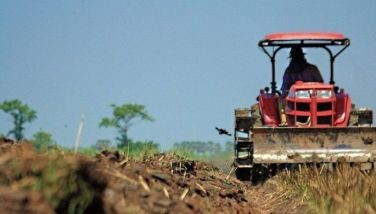Hybrid banana can thrive in RP — study
December 25, 2005 | 12:00am
DAVAO CITY – And now, hybrid banana.
Although of foreign origin, some introduced banana accessions can feel at home in Mindanao conditions.
Take the foreign hybrid bananas which originated from the "Fundacion de Hondureña de Investigacion Agricola" (FHIA) of Honduras.
These thrive well in local conditions and can hold themselves well against the dread Sigatoka disease, one of the most important constraints in banana production, noted Lorna Herradura and Marilyn Alforque of the Department of Agriculture-Bureau of Plant Industry (DA-BPI) in Bago Oshiro, Davao City.
Herradura and Alforque based their contention on results of a study they conducted titled "Screening of Improved Banana Hybrids Against Sigatoka."
The study used 16 cultivars of tissue-cultured plantlets from Belgium. These were planted in separate blocks in the field amid Cavendish banana plants which served as sources of inoculum for the Sigatoka disease.
The plants were evaluated using the technical guidelines for evaluation of germplasm for resistance of Sigatoka disdease formulated by the International network for the Improvement of Banana and Plantain (INIBAP), which coordinated the study.
The guidelines included the following:
• Youngest leaf spotted (YSL, or leaf number of the first leaf that shows at least 10 spots with necrotic or dry center, the earliest symptoms of Sigatoka.
• Disease development time (DDT), which is measured in days from tagging of the cigar leaf up to the development of 10 necrotic lesions on the same leaf.
• Infection index, or the amount of leaf area affected and is expressed in disease grade of 0-7 rating scale.
Results indicated that, generally, the FHIA accessions (1, 2, 3, 18, 21, and 25) performed well against Sigatoka disease under Davao condition.
"Aside from resistance of Sigatoka leaf spot, FHIA accessions have also processing quality potential, especially FHIA 21, which is best suited for the production of banana chips," Herradura said. – Rudy A. Fernandez
Although of foreign origin, some introduced banana accessions can feel at home in Mindanao conditions.
Take the foreign hybrid bananas which originated from the "Fundacion de Hondureña de Investigacion Agricola" (FHIA) of Honduras.
These thrive well in local conditions and can hold themselves well against the dread Sigatoka disease, one of the most important constraints in banana production, noted Lorna Herradura and Marilyn Alforque of the Department of Agriculture-Bureau of Plant Industry (DA-BPI) in Bago Oshiro, Davao City.
Herradura and Alforque based their contention on results of a study they conducted titled "Screening of Improved Banana Hybrids Against Sigatoka."
The study used 16 cultivars of tissue-cultured plantlets from Belgium. These were planted in separate blocks in the field amid Cavendish banana plants which served as sources of inoculum for the Sigatoka disease.
The plants were evaluated using the technical guidelines for evaluation of germplasm for resistance of Sigatoka disdease formulated by the International network for the Improvement of Banana and Plantain (INIBAP), which coordinated the study.
The guidelines included the following:
• Youngest leaf spotted (YSL, or leaf number of the first leaf that shows at least 10 spots with necrotic or dry center, the earliest symptoms of Sigatoka.
• Disease development time (DDT), which is measured in days from tagging of the cigar leaf up to the development of 10 necrotic lesions on the same leaf.
• Infection index, or the amount of leaf area affected and is expressed in disease grade of 0-7 rating scale.
Results indicated that, generally, the FHIA accessions (1, 2, 3, 18, 21, and 25) performed well against Sigatoka disease under Davao condition.
"Aside from resistance of Sigatoka leaf spot, FHIA accessions have also processing quality potential, especially FHIA 21, which is best suited for the production of banana chips," Herradura said. – Rudy A. Fernandez
BrandSpace Articles
<
>
- Latest
Latest
Latest
April 10, 2024 - 5:12pm
By Ian Laqui | April 10, 2024 - 5:12pm
March 4, 2024 - 3:32pm
By Ian Laqui | March 4, 2024 - 3:32pm
March 4, 2024 - 2:12pm
By Kristine Daguno-Bersamina | March 4, 2024 - 2:12pm
February 17, 2024 - 2:31pm
February 17, 2024 - 2:31pm
February 13, 2024 - 7:17pm
By Ian Laqui | February 13, 2024 - 7:17pm
Recommended




























